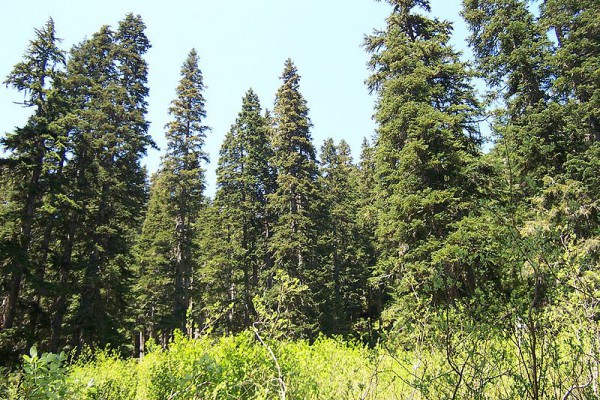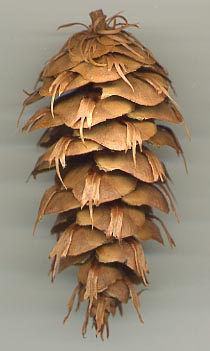
David Douglas (1799-1834)
On June 25 1799, Scottish botanist David Douglas was born. Douglas was one of the most successful of the great 19th century plant collectors. Today, he is best known as the namesake of the Douglas fir. He worked as a gardener, and explored the Scottish Highlands, North America, and Hawaii, where he died.
David Douglas – Youth and Education
David Douglas was born in Scone, Perthshire, Scotland, the second son of John Douglas, a stonemason, and Jean Drummond. He was apprenticed to the head gardener at Scone Palace, the seat of the Earl of Mansfield and spent several years in this position. At Perth college, Douglas intended to learn more about scientific and mathematical aspects of plant culture. He later moved to the Botanical Gardens of Glasgow University and attended botany lectures there. Back then, William Jackson Hooker was in the position of the Garden Director and Professor of Botany. He was impressed by David Douglas’ work and took him on an expedition to the Highlands before recommending him to the Royal Horticultural Society of London.
Travels to North America
David Douglas went on three different trips from England to North America between 1823 and 1834. On his third trip, Douglas first visited Columbia River, then he headed towards San Francisco and later Hawaii. He returned to Columbia River in 1832 and went back to Hawaii one year later. However, Douglas’ second trip was probably his most successful. The botanist was sent plant-hunting in the Pacific-Northwest by the Royal Horticultural Society. In 1826, Douglas was compelled to climb a peak near Athabasca Pass to take in the view. Further, David Douglas introduced the famous Douglas-fir into cultivation in 1827. Although the common name Douglas-fir refers to David Douglas, the tree’s scientific name, Pseudotsuga menziesii, honours a rival botanist, Archibald Menzies.

Douglas fir at North Fork Skykomish Trail, Washington, USA
Image: Mark A. Taff
The Douglas Fir
The coast Douglas fir grows (as its name might already have revealed) in the coastal regions from west-central British Columbia southward to central California. In California, it is found in the Klamath and California Coast Ranges as far south as the Santa Lucia Range, with a small stand as far south as the Purisima Hills in Santa Barbara County. The variety is currently (probably) the second-tallest conifer in the world. Extant coast Douglas fir trees grow 60–75 m or more in height and 1.5–2 m in diameter. Towards the inland, the coast Douglas fir is replaced by the interior Douglas fir and intergrades with coast Douglas fir in the Cascades of northern Washington and southern British Columbia, and from there ranges northward to central British Columbia and southeastward to the Mexican border, becoming increasingly disjunct as latitude decreases and altitude increases.

Pseudotsuga menziesii subsp. menziesii cone. From a tree grown from seed collected by David Douglas, MPF, CC BY-SA 3.0, via Wikimedia Commons
Further Notable Botanical Introductions
Further notable introductions by David Douglas include Sitka Spruce, Sugar Pine, Western White Pine, Ponderosa Pine, Lodgepole Pine, Monterey Pine, Grand Fir, Noble Fir and several other conifers that transformed the British landscape and timber industry, as well as numerous garden shrubs and herbs such as the Flowering currant, Salal, Lupin, Penstemon and California poppy. All in all, Douglas introduced around about 240 species of plants to Britain. After three years and 11,300 kilometres he returned to England on 11 October 1827, where he was enthusiastically received. However, after years of adventure and hardship, he had trouble reintegrating into society and left Portsmouth in 1829 to return to North America. From giant fir (Abies grandis) and purple fir (Abies amabilis) he sent seeds to England; he found the Monterey pine (Pinus radiata). In 1833 he reached Hawaii and climbed Mauna Kea and Mauna Loa. He was only the second European to reach the summit of the Mauna Loa volcano.
Death on Mauna Kea
During his trip to Hawaii, David Douglas became the second known European to reach the summit of the Mauna Loa volcano. Unfortunately, he died under mysterious circumstances while climbing Mauna Kea in Hawaiʻi at the age of 35 in 1834. It is widely assumed that he fell into a pit trap and was possibly crushed by a bull that fell into the same trap. He was last seen at the hut of Englishman Edward Gurney, a bullock hunter and escaped convict. Gurney was also suspected in Douglas’s death, as Douglas was said to have been carrying more money than Gurney subsequently delivered with the body. However, most investigators have concluded that Gurney’s account was true. In 1934, 100 years after Douglas’ death, a stone cairn memorial was erected to the botanist at Kaluakauka, near where his body was found, off Mānā Road on the Island of Hawaiʻi. A small stand of Douglas-fir trees has been planted there.[5]
Douglas’ discoveries were of particular importance to forestry. While hardly ten coniferous species are indigenous in Europe, Douglas alone added over 200 new species from America. He also enriched the Victorian theme gardens enormously: the “American Garden” or the “Pinetum” were particularly popular.
Finding David Douglas [7]
References and Further Reading:
- [1] David Douglas Biography
- [2] David Douglas Short Biography
- [3] Plants Profile of the Douglas-fir
- [4] David Douglas at Wikidata
- [5] Betty Fullard-Leo, Who Killed David Douglas?
- [6] “Second Journey to the Northwestern Parts of the Continent of North America: During the Years 1829–’30–’31–’32–’33. V. Account of Mr. Douglas’ Second Visit to the Columbia; His Excursions in California”. The Quarterly of the Oregon Historical Society. 6. 1
- [7] Finding David Douglas, documentary film project, Finding David Douglas film @ youtube
- [8] Douglas, David; Royal Horticultural Society (Great Britain) (1914). Journal kept by David Douglas during his travels in North America 1823–1827, together with a particular description of thirty-three species of American oaks and eighteen species of Pinus, with appendices containing a list of the plants introduced by Douglas and an account of his death in 1834. Published under the direction of the Royal Horticultural Society. University of California Libraries. London : W. Wesley & Son
- [9] Nisbet, Jack (2009). The Collector : David Douglas and the Natural History of the Northwest. Seattle, WA; New York, NY: Sasquatch Books Distributed by PGW/Perseus.
- [10] Timeline of Scientists dying a non natural death before 1900, via Wikidata






Summer sailing Columbia River so studying up on area. Thank you